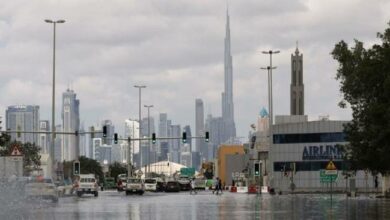Six Popular Global Tourist Destinations Prohibiting Car Access

Many discussions have revolved around the environmental consequences of tourism, and it’s not limited to the footprint left by tourists alone. The vehicles used to reach these picturesque destinations can also pose threats to fragile ecosystems. Consequently, several places around the world have adopted measures to prohibit cars, encouraging visitors to explore on foot and truly appreciate the natural beauty.
- Halibut Cove, Alaska:
- Halibut Cove, an Alaskan village, remains unreachable by road to safeguard its pristine environment. Instead, residents and visitors rely on boats for transportation, and the village boasts the only floating post office in the United States.
- Zermatt, Switzerland:
- Nestled near the Alps, Zermatt is renowned for skiing and mountaineering. This Swiss town, known for its high cost of living, enforces a ban on conventional vehicles and permits only electric cars to reduce noise and air pollution.
- Cies Islands, Spain:
- The Cies Islands, a stunning Spanish archipelago, are comprised of three small islands. Accessible solely by boats and country crafts, these islands feature white sandy beaches shaded by pine forests and have been recognized by The New York Times for their commitment to eco-friendly tourism.
- Civita di Bagnoregio, Italy:
- Civita di Bagnoregio, often referred to as a “dying city,” can only be reached on foot via a footbridge. This Italian village, located in the mountains about 120 km from Rome, boasts a rich history dating back 2500 years and offers visitors a journey back in time with its medieval architecture.
- Giethoorn, Netherlands:
- Known as the “Venice of the North,” Giethoorn in the Netherlands is characterized by its numerous canals and waterways, surpassing the number of roads. The primary mode of transport here is by boat, and the town is connected by 176 bridges, completely eliminating the need for cars.
- Lamu, Kenya:
- Lamu, a small coastal town in Kenya steeped in history and Swahili culture, has a UNESCO World Heritage Site designation. It dates back to 1370 and maintains its authenticity with narrow lanes and no cars. Instead, donkeys and boats are the primary means of transportation in this unique coastal town.
These destinations prioritize eco-friendly travel experiences, enabling visitors to immerse themselves in the beauty of nature and rich cultural heritage while reducing the environmental impact associated with vehicular traffic.
. The vehicles used to reach these picturesque destinations can also pose threats to fragile ecosystems. Consequently, several places around the world have adopted measures to prohibit cars, encouraging visitors to explore on foot and truly appreciate the natural beauty.
- Halibut Cove, Alaska:
- Halibut Cove, an Alaskan village, remains unreachable by road to safeguard its pristine environment. Instead, residents and visitors rely on boats for transportation, and the village boasts the only floating post office in the United States.
- Zermatt, Switzerland:
- Nestled near the Alps, Zermatt is renowned for skiing and mountaineering. This Swiss town, known for its high cost of living, enforces a ban on conventional vehicles and permits only electric cars to reduce noise and air pollution.
- Cies Islands, Spain:
- The Cies Islands, a stunning Spanish archipelago, are comprised of three small islands. Accessible solely by boats and country crafts, these islands feature white sandy beaches shaded by pine forests and have been recognized by The New York Times for their commitment to eco-friendly tourism.
- Civita di Bagnoregio, Italy:
- Civita di Bagnoregio, often referred to as a “dying city,” can only be reached on foot via a footbridge. This Italian village, located in the mountains about 120 km from Rome, boasts a rich history dating back 2500 years and offers visitors a journey back in time with its medieval architecture.
- Giethoorn, Netherlands:
- Known as the “Venice of the North,” Giethoorn in the Netherlands is characterized by its numerous canals and waterways, surpassing the number of roads. The primary mode of transport here is by boat, and the town is connected by 176 bridges, completely eliminating the need for cars.
- Lamu, Kenya:
- Lamu, a small coastal town in Kenya steeped in history and Swahili culture, has a UNESCO World Heritage Site designation. It dates back to 1370 and maintains its authenticity with narrow lanes and no cars. Instead, donkeys and boats are the primary means of transportation in this unique coastal town.
These destinations prioritize eco-friendly travel experiences, enabling visitors to immerse themselves in the beauty of nature and rich cultural heritage while reducing the environmental impact associated with vehicular traffic.






